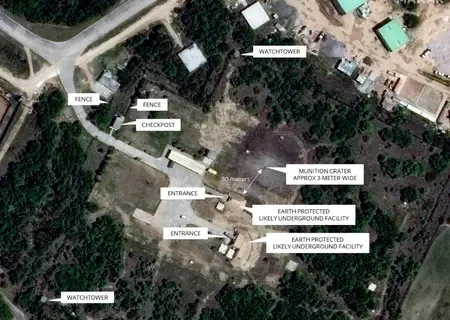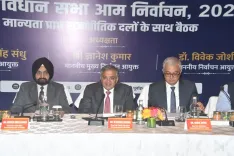Why is Western Media Hesitant to Acknowledge India's Military Prowess During Operation Sindoor?

Synopsis
Key Takeaways
- Western media often downplays India's military advancements.
- Operation Sindoor showcased India's precision strike capabilities.
- Satellite evidence confirmed extensive damage to Pakistani infrastructure.
- Reporting biases can distort narratives in military journalism.
- Geopolitical factors influence media portrayals of India and Pakistan.
London, Aug 13 (NationPress) The western media's hesitance to fully report on India's exceptional performance during Operation Sindoor reflects a broader trend in journalism that often overlooks India's growing military prowess, as cited by a prominent UK publication on Wednesday.
In retaliation to the April 22 Pahalgam terrorist attack, India executed its decisive Operation Sindoor on May 7, targeting terrorist bases in Pakistan, marking one of the most extensive military operations since the 1971 war.
Satellite imagery and independent evaluations by various analysts revealed the significant damage inflicted on Pakistani terrorist and defense infrastructure, showcasing India’s enhanced precision strike capabilities and the operational disparity between the two countries.
Despite the undeniable satellite evidence that illustrates India's operational success and Pakistan's limited retaliatory capabilities, reports from the western media have shown a misleading equivalency, as noted by the UK-based newspaper for British Asians, Asian Lite.
“Major media outlets consistently depicted the conflict as a mutual exchange of hostilities, failing to recognize the substantial difference in military effectiveness between the two nations. The reluctance of western media to acknowledge India’s superior performance highlights a broader tendency in western journalism to downplay India’s military advancements, emphasizing Pakistani claims without verification, and striving for a false balance in reporting that lacks factual integrity,” it stated.
India targeted Pakistani military installations across six airfields with remarkable precision, successfully minimizing collateral damage. Analyses by several leading US outlets revealed the extensive damage inflicted on Pakistani military infrastructure.
Indian forces accurately struck aircraft hangars at Bholari air base near Karachi. Significant damage was observed at Nur Khan Air Base in Rawalpindi, situated just 15 miles from Pakistan’s Army headquarters and near facilities responsible for safeguarding Pakistan’s nuclear arsenal.
The runway at Sargodha air base in Punjab Province was hit at multiple locations, while the Rahim Yar Khan air base was rendered non-operational, as confirmed by Pakistani officials through official notices. The target selection by India showcased sufficient intelligence capabilities and strategic planning, according to the report.
India’s actions degraded Pakistan's offensive and defensive air capabilities by targeting critical infrastructure, including hangars, runways, radar installations, and command centers. Strikes at Pasrur radar installations and Sialkot aviation base using precision munitions demonstrated India’s ability to neutralize Pakistan’s early warning systems. Pakistani officials claimed to have struck Indian military facilities from May 8-10; however, satellite imagery does not corroborate these claims.
“Western media often highlighted civilian casualties alleged by Pakistan while disregarding the precision of Indian strikes aimed at military infrastructure. This selective focus creates a distorted narrative that fails to convey the actual details of the operation. The reporting by western media contrasts significantly with their coverage of other military operations, where precision strikes and technological superiority are acknowledged rather than understated. This double standard in western media indicates underlying biases that shape how India’s military capabilities and strategic responses are presented to the global audience,” the Asian Lite report elaborated.
“Western sympathy towards Pakistan is often driven by concerns about regional stability, mistakenly strengthening a key Chinese ally that poses a direct challenge to western interests in the Indo-Pacific, as seen in projects like the Belt and Road Initiative, hosting Chinese naval facilities at Gwadar Port, and Beijing’s significant military support to Islamabad,” it concluded.









